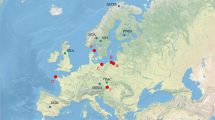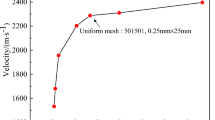Abstract
The analysis of the seismic and infrasound data recorded at the time of the Cheonan incident led Kim and Gitterman (this journal, published on line August 2012) to conclude that a non-contact underwater explosion had sunk the ship. They also concluded that one of the mines deployed by the South Korean Navy many years ago in the area and then abandoned sank the ship. Their mine theory that is based on the explosive charge weights they calculated by means of two methods using the bubble period determined by their analysis, however, appears to be invalid. Although the incident had occurred in a shallow sea with a depth of less than 50m, the authors used the methods that are applicable only to free-field underwater explosions. The consideration of the influence on the bubble period of the nearby sea surface and bottom and the nearby ship’s hull would double the calculated weights. In addition, the authors ignored several evidences that support the torpedo theory. One of them is aluminum-containing white powder found in large quantities at certain substrates in the retrieved Cheonan. However, the conclusion of the official investigation group that the torpedo was made in North Korea is based on a circumstantial evidence and is yet to be proven with other more direct evidences.


Similar content being viewed by others
References
Cole, R. H., Underwater explosions, (Princeton University Press, Princeton, NJ 1948).
Geers, T. L., and Hunter, K. S. (2002), An integrated wave-effects model for an underwater explosion bubble, J. Acoust. Soc. AM 111, 1584.
Jig (Multinational Civilian-Military Joint Investigation Group) (2010), Final report: on the attack against ROKS Cheonan, Ministry of National Defense, ROK, http://cheonan46.go.kr/100.
Kim, K. S. (2010a), Adsorbates: TGA/DTA evidence for gelatinous/hydrated/amorphous Al(OH) 3 and AlO(OH), http://bric.postech.ac.kr/scicafe/read.php?Board=scicafe000692&id=9911.
Kim, K. S. (2010b), Adsorption of sulfate ions in seawater on adsorbates, http://bric.postech.ac.kr/scicafe/read.php?Board=scicafe000692&id=7312.
Kim, K. S. (2010c), Can the adsorbates be really amorphous aluminum oxide?, http://bric.postech.ac.kr/scicafe/read.php?Board=scicafe000692&id=2001.
K. S. Kim (2010d), Was the JIG’s UNDEX experimental data really fabricated? (Adsorbate: accelerated adsorption and incorporation of sulfate ions), http://bric.postech.ac.kr/scicafe/read.php?Board=scicafe000692&id=9691.
Kim, K. S. (2011), Unfinished investigation of the Cheonan incident, http://bric.postech.ac.kr/scicafe/read.php?Board=scicafe000692&id=12193.
Kim, K. S. (2013) Chemical kinetics and thermodynamics modeling of underwater explosion of Al/TNT explosives, to be published.
Kim, S. G. (2012), Personal communication.
Kim, S. G., and Gitterman, Y. (2012), Underwater explosion (UWE) analysis of the ROKS Cheonan incident, Pure Appl. Geophys., published online, 10 August 2012.
Klaseboer, E., Cho, B. C., and Hung, K. C. (2005), Dynamics of an oscillating bubble near a floating structure, J. of Fluids and Structure, 21, 395–412.
Matsumoto, K. (1996), Boundary curvature effects on gas bubble oscillations in underwater explosion, M. S. thesis, U.S. Pos Naval Postgraduate School, Monterey, CA.
Mnd (Ministry of National Defense, ROK) (2011), White paper on the investigation of the Cheonan incident, http://www.mnd.go.kr/cms_file/policyDataBook/cheonan/whitepaper_all.pdf.
Phillips, D. E., and Willey, R. L. (1967), Underwater explosion tests of two steam producing explosives II. 50- and 300-lb charge tests, NOLTR 67–7, U. S. Naval Ordnance Laboratory, White Oak, Silver Spring, MD.
Swisdak, M. M. (1978), Explosion effects and properties: part II—explosion effects in water, NSWC/WOL/TR 76–116, Naval Surface Weapons Center, Dahlgren, VA.
Vadhe, P. P., Pawar, R. B., Sinha, R. K., Asthana, S. N., and Rao, A. S. (2008), Cast aluminized explosives (review), combustion, explosion, and shock waves, 44, 461.
Wardraw, A.B., Jr., and Mair, H.U. (1998), Spherical solutions of an underwater explosion bubble, shock and vibration, 5, 89.
Zhang, A., Yao, X., and Li, J. (2008), Characteristics of a bubble jet near a vertical wall, J. Marine Sci. Appl., 7, 1.
Author information
Authors and Affiliations
Corresponding author
Rights and permissions
About this article
Cite this article
Kim, K.S. Comment on Underwater Explosion (UWE) Analysis of the ROKS Cheonan Incident by S.G. Kim and Y. Kitterman. Pure Appl. Geophys. 170, 473–478 (2013). https://doi.org/10.1007/s00024-012-0629-7
Received:
Revised:
Accepted:
Published:
Issue Date:
DOI: https://doi.org/10.1007/s00024-012-0629-7




